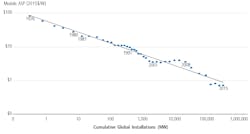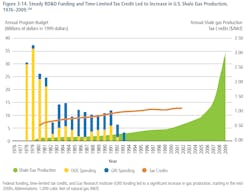The Unfairness of Cost-based Arguments About 'Unfairness'
What do you think about the following two “fairness” issues?
Fairness issue #1 is excerpted from Transforming the Nation’s Electricity System: The Second Installment of the QER | January 2017:
“Contentious discussions around the results of net metering include whether rates structured in this manner can contribute to inadequate valuation of grid services, revenue shifts, and cost shifts for maintaining the grid from DG participants to or from non-participants. These shifts can be significant, with a recent study performed for the CPUC forecasting that the cost shift associated with net metering would be $1.1 billion per year by 2020. The CPUC study found that in 2011 non-residential net metered customers (56 percent of net metered systems) paid 112 percent of the cost to serve them, while residential net metered customers paid 81 percent of the cost to serve them.”
Fairness issue #2 is based on analysis of clothing manufacturing costs and size differences between people. For example, a U.N. study (page 7) shows the direct material costs in a leather clothing item contributes 40% to the total export price the item. A very large shoe can easily have twice as much leather as a small one. Similarly, “XXL” leather jackets require 50% more leather than jackets that are sized “SMALL.”
Via seemingly valid “net metering” sorts of arguments we can justify a 20% price premium for “XXL” leather jackets vs. average-sized buyers, and an analogous discount of 20% for purchasers of the same leather jacket when sized “SMALL.”
Why do I say these sorts of arguments are only “seemingly” valid? Because I recall something that a hardened veteran of these types of fairness arguments once told me. The person had suffered and survived (and documented in great detail) many of the most painful “fairness arguments” you could imagine. She said:
“Being fair is not a matter of giving each person the same exact thing—instead, being fair is a matter of giving each person what they need.”
I owe this definition of fairness to a woman I met the year before she retired, after her having worked for more than 30 years as a high school math teacher.
Fairness arguments regarding net metering have their place, and those who are making them are much more sophisticated than high school students. Nonetheless, I take the QER report as providing hints to an answer to help us decide this issue, because it notes dramatic drops in cost of grid-edge technologies, including an approximately 100 fold drop for average selling prices of solar photovoltaic modules between 1976 and 2015, which it states are now averaging below $1/watt (W).
The question pivots on costs and benefits, which will vary considerably depending on variations in the time horizons for key market developments. In this regard, when it comes to solar PV, the QER predicts that the price of installed residential- and utility-scale solar PV is projected “to fall below $2 per WDC (direct-current wattage) and $1.15/WDC, respectively, in the next 10 years. Solar PV electricity generation is projected to grow by a factor of 17 from 2015 to 2040 and reach an installed capacity of over 100 GW.” (page 3-10).
While addressing controversies, let’s recall how there was much politicization of the move to highly efficient LED lighting from older incandescent light bulbs. (Who remembers the news item: "Bachmann to Democrats: Don't tell Americans what light bulbs to buy"?) Those supposedly more “real American” bulbs converted only 2% of electricity to light and wasted the remaining 98% as heat. The QER shows a dramatic 17-fold drop in costs for energy efficient LED A-Type lighting, from $170 to $10 per kilolumen, between 2008 and 2015.
With these and other examples, the QER repeatedly shows long term economic and environmental benefits of avoiding undue concern about “unfairness.” Minimizing nitpicking in this way is well-aligned with the principle that “the best is the enemy of the good.”
Similarly, those suggesting unfairness is in play when it comes to R&D, as if R&D is a “subsidy,” should see the data which the QER provided on the benefits to our economy of the amazing results R&D brought us with regard to U.S. Shale Gas Production.
Whether we want electric service or leather items or energy independence or jobs, “unfairness” arguments become unfair when they slow the sort of progress the QER report demonstrates--progress that ultimately benefits all of us.
https://www.energy.gov/epsa/quadrennial-energy-review-second-installment
Save
Save
Save
About the Author
Peter Arvan Manos
Utility Industry Analyst
Peter Manos is Director of Research for Electric Power & Smart Grid, on the Energy Sector team at ARC. He analyzes the latest trends across People, Process, and Technology to uncover business and digital transformation best practices for electric, gas, and water utilities. He can be reached at [email protected]



